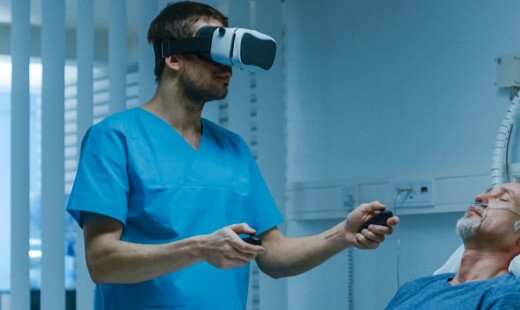No one can deny the huge impact technology has left on our society. In the healthcare industry in particular, the digital age has revolutionized how and where care is delivered. Electronic health records — commonly known as EHR — are a prime example of this. The days of error-prone paper charting and faxing are quickly disappearing. In the EHR era, electronically transferrable health information allows better and faster collaboration between healthcare providers, as well as between providers and patients. The result is a seamless approach to healthcare delivery that improves the quality, efficiency, and safety of patient care.
In case you’ve been enjoying an extended vacation or living on a deserted island and missed the revolution, an electronic health record details patient’s’ health history, regardless of the location at which they received care. This can range from a facility like an outpatient clinic to a facility like a hospital. EHRs contain anything from a patient’s diagnosis, to medications, treatment plans, immunization dates, allergies, radiology images, and laboratory and test results. Before EHRs, many patients previous medical history have been lost, misplaced, or even damaged, since it was a physical document. Many patients’ move and transfer healthcare facilities throughout their lifetime, and EHRs make sure that each new doctor, specialist, and nurse practitioner has a comprehensive record of their healthcare. This device allows those with health care careers to examine a patient’s history in-depth, thus enabling them to make better, quicker, and more accurate conclusions, a notion that has only been confirmed by studies. For example, a National Center for Health Statistics survey has revealed that 74% of all doctors believe EHRs have improved overall patient care.
The detailed and highly confidential information healthcare facilities have on each of their patients ultimately allows for a better patient experience and diagnosis – but with a large amount of data comes a large amount of responsibility. The switch from paper health records to electronic health records has not been an easy one. Implementation costs and ownership rights have created tricky problems that have had to be handled with the utmost care to ensure the information is protected and won’t fall into the wrong hands. Switching over to EHRs is both costly and time consuming, and there are often issues with execution, such as inconsistencies in technology standards. Filing systems, data encryption and security, retrieval, storage, and disposal of paper documents need to be implemented properly by those with medical jobs. In order to make sure these private records are maintained, hospitals and other healthcare facilities which use EHRs must make sure they are regularly maintained and that security features are constantly being updated. Paper documentation, however, has not been completely eliminated, as many healthcare facilities still have patients fill out information on paper only to be later translated into digital form and placed within their electronic record.
EHR systems will continue to evolve, as will healthcare providers’ use of them. In the meantime, those working in healthcare jobs can enjoy the streamlined work processes EHR allows and, ultimately, the ability to provide better, safer patient care.
Originally posted on 3/28/2016



